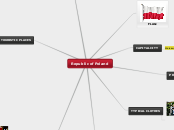によって Paul Paradiso 6年前.
206
Literacy Strategies for Special Needs.
Effective communication and literacy strategies are essential for supporting students with special needs. Understanding non-symbolic forms of communication, such as body language and facial expressions, can help educators identify a student'
開く
Understand/interpret a student's non-symbolic forms of communication. Frustration Behaviors LITERACY STRATEGIES FOR SPECIAL NEEDS Applied Behavioural Analysis Chaining for Oral Chaining for Written Elementary Literacy Strategies Verbal Related social skills. Theory of Mind
Facial expression.
Listening.
Waiting to speak.
Body language.
Tone of voice/volume.
Eye contact.
Speech Therapy Repetitive Modelling Reading Words Symbols Writing Graphic organizers Keying words Copying Tracing Augmentative and Alternative Communication System Picture Exchange Communication System by Pyramid Signing and gestures. Assistive Technology Eye-operated Eyegaze Edge
Text to voice. Voice to text. Proloquo2Go To learn vocabulary.
To form sentences.
To answer questions
To ask questions.
Picture Symbols Chart/board Flip book Cards on a ring. Can be combined with printed words. Visual Instructions Schedules Labels BoardMaker









